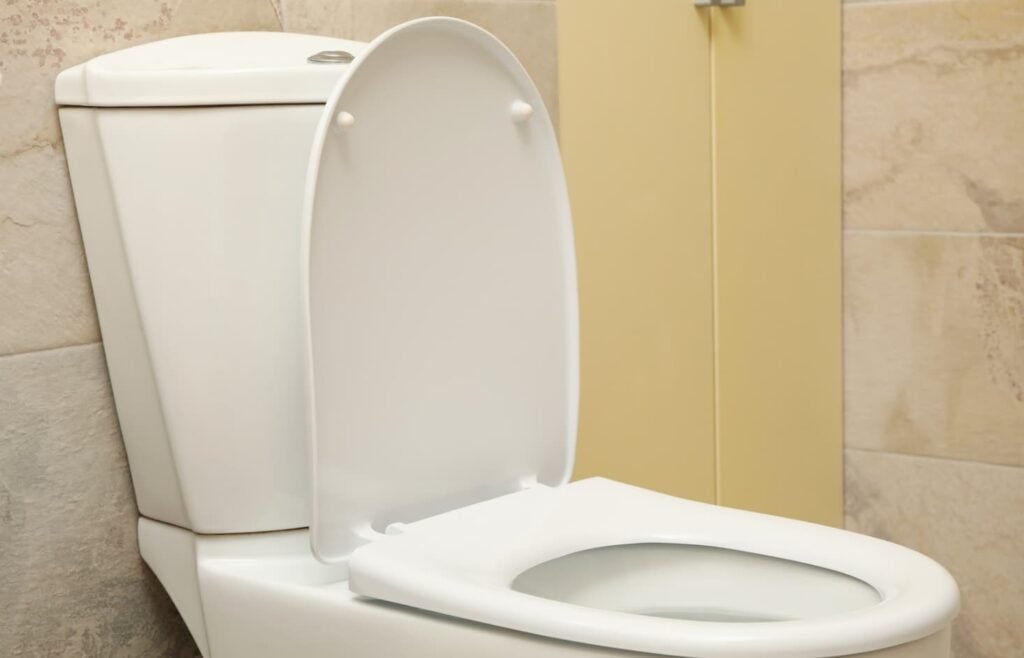Mold in the toilet is a common issue that many homeowners face. It is not only unsightly but can also pose health risks if left unchecked. Tackling mold growth in the bathroom is crucial because the environment is often warm and moist, creating the perfect breeding ground for mold spores. Understanding why mold inhabits the toilet and the areas prone to mold growth can help in effectively addressing the problem. Our Mold Removal Plano company is here to help!
Removing mold from the toilet requires a systematic approach to ensure complete eradication. Regular cleaning combined with the right cleaning agents is essential to get rid of the mold. Some household products, such as vinegar or a bleach solution, can be effective in removing mold. However, it’s important to follow safety precautions and ensure the area is well-ventilated during the cleaning process.

Key Takeaways
- Mold in toilets is a common problem due to the moist environment.
- Systematic cleaning with appropriate products is key to removal.
- Preventative measures can help avoid future mold growth.
Understanding Mold in the Toilet
Mold in the toilet is a common household issue that arises from the perfect combination of moisture and organic material needed for mold spores to thrive. It is essential to identify the type and causes of mold growth in toilets to effectively tackle and prevent it.
Types of Mold Found in Bathrooms
Bathrooms are prime locations for various types of mold due to the high humidity levels. Toilet mold often appears as a slimy or fuzzy growth that can range in color from black to green. The most notorious is black mold, scientifically known as Stachybotrys chartarum, which can be particularly troublesome due to its potential health risks. However, other common types of bathroom mold include Cladosporium, Aspergillus, and Penicillium.
Causes of Mold Growth in Toilets
The causes of mold growth in toilets are generally due to persistent moisture and the presence of organic materials such as human waste, mineral buildup, and even toilet paper residues. Mold spores are omnipresent in the air and will settle and grow in a toilet bowl, tank, or around the seat if conditions are conducive. Mold growth can be expedited by a lack of ventilation, infrequent cleaning, and leaks that keep areas damp. Regular cleaning and adequate airflow are critical in preventing black mold growth and maintaining a mold-free bathroom environment.
Step-by-Step Mold Removal

When dealing with mold in toilets, it’s essential to approach the problem with precision and care. By using either natural remedies or chemical solutions, one can effectively eliminate mold. Below are structured methods for mold removal, stressing safety precautions, natural remedies, and chemical interventions.
Preparation and Safety
Before starting the mold removal process, safety should be paramount. Gloves and a face mask are necessary to avoid direct contact with mold, which can be hazardous to one’s health. Ensure the room is well-ventilated by opening windows or using an exhaust fan to reduce mold spore concentration in the air. Gather all necessary supplies such as a toilet brush, spray bottle, vinegar, or bleach solution.
Natural Remedies for Mold Elimination
For a more environmentally-friendly approach, vinegar is effective in mold elimination. To use vinegar:
- Pour one cup of white vinegar into the toilet bowl.
- Add another cup of vinegar into the tank.
- Allow it to sit for an hour for it to break down the mold.
- Scrub the mold away using a toilet brush.
- Flush the toilet to rinse away the mold and vinegar residue.
Repeated applications may be needed for complete mold removal. It’s important to routinely clean with vinegar to prevent future mold growth.
Chemical Solutions for Stubborn Mold
Tenacious mold may require stronger chemical solutions like a bleach-based cleaner. Here’s how:
- Make a bleach solution by diluting one part bleach with ten parts water in a spray bottle.
- Apply the bleach solution to the affected areas of the toilet.
- Leave it for about 15 minutes to penetrate and disinfect the mold colonies.
- Use a toilet brush to scrub the mold away vigorously.
- Flush the toilet multiple times to thoroughly wash out the dislodged mold and bleach.
When using bleach, never mix it with other cleaners to avoid producing toxic fumes. Regular application of bleach can prevent the return of mold, but it should be used cautiously and sparingly due to its abrasive nature.
Preventing Future Mold Issues
Mold thrives in moist environments, making the bathroom a common battleground. Prevention hinges on managing moisture levels and ensuring proper cleaning routines are in place.
Regular Cleaning Routines
Regular cleaning is crucial in preventing mold in toilets. At least once a week, clean the toilet bowl with a disinfecting cleaner to remove any potential mold spores. For the toilet tank, using a solution of distilled vinegar can help eliminate mold colonies. This non-toxic approach ensures that the tank’s components aren’t damaged by harsh chemicals.
- Clean toilet bowl weekly with a disinfectant.
- Use distilled vinegar in the toilet tank to remove mold without damage.
Improving Bathroom Ventilation
Adequate ventilation is essential to prevent mold growth. Keeping humidity levels low by using an exhaust fan reduces the occurrence of excess moisture, which mold spores need to grow. If the bathroom lacks an exhaust fan, it may be beneficial to install one or use a dehumidifier to help regulate moisture levels.
- Use an exhaust fan during and after showers to decrease humidity.
- Consider a dehumidifier if the bathroom is frequently humid.
Related Article/Service : Water Damage Restoration Plano
